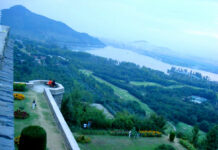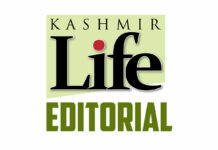Kosuhur, the language that Kashmir speaks for centuries, has witnessed controversies in recent past. The one that is currently in circulation emanates from the HRD ministry’s website guide that helps translate words into Kashmiri. Some Kashmiri Pandits reportedly took exception to some of the translations that they found were incorrect. The ministry has stopped the particular online service and must be in the process of repairs. There is no harm in corrections, but no language belongs to a particular faith. Languages belong to people who speak, use and improve it.
In the last century, the Kashmiri language has survived serious controversies. At one point of time, there was a major movement, then also spearheaded by Kashmiri Pandits, that the Koshur should not be written in the Persian scripts as it has originally been written in Devnagri script. The Kashmiri language does have a Sanskrit past. This idea has been returning every time the language ambassadors in Kashmiri minority community are told that certain ears are keen to listen to this. The Kashmiri language is part of the seventh schedule and it envisages its Persian scripts as well.
The Kashmiri language is spoken by Kashmir. However, there are huge chunks of the population that speak and understand Kashmiri in Pir Panchal and Chenab valley. A significant population on the other side of the Line of Control also speaks Kashmiri but the numbers are quite a few. The influx of Kashmiri populations into the Pakistani administered regions of the erstwhile state since 1947 have helped the Kashmiri speaking community sustain this language. Koshur has remained continuously changing and improving for last more than half of the millennium. The diversity with which its different forms are being used in the Kashmiri speaking regions of the state indicates the evolution that it is still undergoing. This is despite the fact that it has an evolved grammar and terabytes of literature to sustain a definite form, both in spoken and written forms.
As it is being taught in the schools and the University of Kashmir has a full-fledged department for this language, off late, the army has also announced its plans to teach the language to its recruits.
It is possible that Koshur might have been written in the Devnagri scripts during the Kotrani era, but the major shift that took place with the establishment of Sultanate, the scripts would have automatically been shifted to the Persian, a court language that survived till the third Dogra Maharaja changed it to Urdu.
But these changes are beyond the scope and control of any language activist. It all depends on the people who use the language. In the last 30 years, the language has accepted such a number of non-Kashmiri words that the nineteenth-century linguistic experts might feel amazed. The main reason for this was that the speakers and users of this language were ready to accommodate the inclusions.
In the twenty-first century Kashmir, there is no possibility of enforcing a language or a script or making changes that suit a class. Even if the HRD ministry changes its translation window on the style of Google translator (!!), it will have no impact on the streets of Srinagar. People will use the language they wish and they rarely bother what happens in the power corridors. Urdu, for instance, is the official language of the Jammu and Kashmir state and it has been almost decimated in the offices. But that has not impacted the society. Urdu is the No 1 language in which most of Jammu and Kashmir understands and transfers knowledge and culture. Unlike English, the global language, all other languages are geography-specific and its speakers decide on what to say and how.









